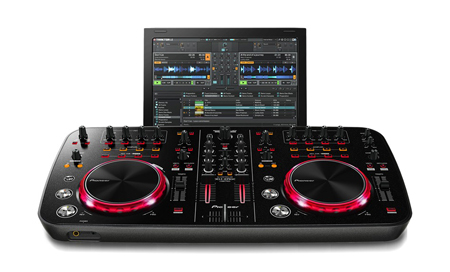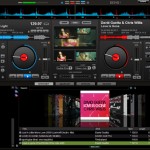Optimize Your Laptop For Digital DJ Setup

Let’s say you are all set with your laptop computer and other DJ equipment to start mixing and performing at parties and clubs.
Are you sure your computer and equipment will get along on the way ? Is it possible to have a DJ gig without any conflicts and problems with your setup ?
In our opinion, using a PC for DJ’ing is never fail-free. That’s the nature of Windows operating systems. Somehow somewhere you always happen to face with conflicts and compatibility issues when connecting external devices to your computer.
Let’s start with recommending beginner DJs to buy and use MacBooks for digital mixing because of Mac operating system’s reliability and speed compared to PCs, then we will give you tips on how to optimize your setup for best performance.
A usual computer DJ setup contains hardware and/or software products from various brands. Even with a simple setup, gathering components from different manufacturers might be tricky. In this article, we will tell you how to optimize your setup for maximum performance and minimum conflicts.
Optimization For Audio
You will need about %20 of your hard disk free for virtual memory and system tasks. It is necessary for system speed. Either get a second hard disk or delete some files if it is more than 80 percent full. If you can, get an internal storage device. External hard drives are also ok. They are all affordable. Try to have a separate one for back up.
Increase RAM
Consider at least 1 GB of memory only for system tasks on your computer. You will need more than that for applications running. With the possibility of using different samplers, instruments and sound generators, ideal amount of RAM would be 3 to 4 GB on your computer. Can you get more like 8 ? Yes you can, but it is rare that your system will use that much memory at once.
Keep Your Library On A Separate Hard Disk
You can improve your system performance by using a 7,200 or even 10,000 RPM separate hard disk for your music files and library. This will reduce fragmented drive space and increase speed of loading and writing of large files.Your system will perform better this way. Keep in mind, there will be a lot of activity on it during running DJ software and mixing.
Choose The Best Ports To Connect
If you have a desktop, we recommend that you connect using the ports in the back of your computer since the front ones do not perform as good.
For multiple USB connections, always use a hub with own AC power. Premium USB cables are always good for prevention of any possible interference or humming in audio with extra shielding.
Windows Optimization
Make sure Windows is always up-to-date.
Try to minimize background running programs such as antivirus or malware scanning. During performance, close those if possible. Using task manager, you can check on which programs are running and stop them if you don’t need.
Disable hard disk sleep functions. This may cause problems if your system goes idle for a certain amount of time. Best is setting that option to “never”.
Do not run any scheduled tasks in the background like auto update. Disable them. Don’t forget, any program running will consume memory.
Keep wireless network off. Wireless network cards scan for any possible networks and use system resources.
On Windows 7 or Vista, disable graphical effects. For theme settings, choose “windows classic”. This will improve your system performance since it demands less sources for visual effects.
Set your laptop’s power option to high performance. Also change sleep settings to “never”.
Use a startup manager type of program to see what is running when you turn your computer on. Disable any programs if you don’t need.
This is important ! Set all the sleep functions on either WIndows or Mac OS to “Never”.
Adjust Latency
When audio is processed thru software and hardware on computer DJ systems, there is a buffering size to be adjusted for that process period. Buffer size means the amount of time computer is given to respond to a request.
Latency is the buffer time a computer is given to respond for input. It is adjusted for different software and hardware determining the audio output delay time.
All DJ software programs have settings for latency. It is a more complex adjustment than we explain here today. What you basically need to know is how to set your software latency.
Prefer low latency settings if you are active on the decks and a lot of activity going on while you’re mixing, like scratching or using sound effects or samplers, so the input response time would be shorter with higher performance on your system with minimal audio delays.
High latency should be preferred for continuous music playback without effects or sampling.
Remember, every system or setup should be tested individually for best results and settings made accordingly. Performance may vary depending on usage and specs.
We hope these tips will help you optimize your computer DJ setup and run with maximum performance.
Please let us know if you know any other ways for PC optimization by commenting this article.



i like virtual dj